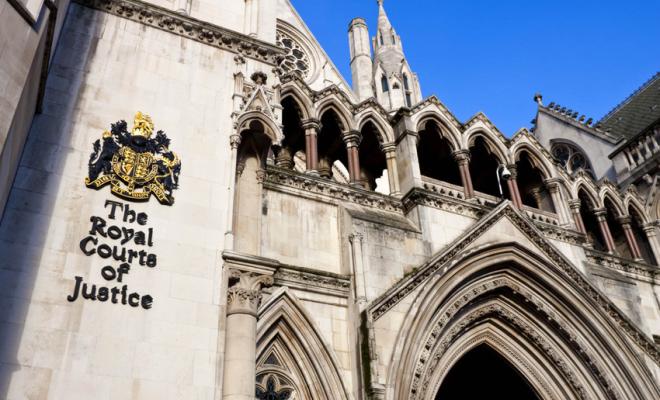14 Jul 2022
Summary
Due to intervention by Friends of the Earth’s Planning Team, crucial policy amendments to coal, oil and gas extraction policies have been adopted in two sizeable geographical areas of North Yorkshire and Northumberland.
The policy amendments were achieved after several years of engagement and attendance at Local Plan Examination Hearings (crucially for the North Yorkshire Minerals and Waste Joint Local Plan). With both of these plans now adopted, the changes we have made now comprise part of the statutory development plan for each respective area.
This essentially means that applicants for new oil, gas and coal must overcome more stringent climate policy considerations (and submit more detailed evidence) when putting forward these types of applications in these areas for the next 15 years.
What is a minerals plan?
A minerals plan can either be a standalone plan, part of a Minerals and Waste Plan or included in a Unitary Local Plan. It's usually drawn up by a minerals planning authority (such as a county council like North Yorkshire) or by a local planning authority with minerals and waste powers, like the London boroughs. Minerals plans set out the area’s approach to mineral extraction (such as gravel, coal or potash extraction) over a specific period. They’re important because of the possible impacts of mineral extraction on climate breakdown and the surrounding environment.
During our Fossil Free campaign (2015-16), the strategy of Friends of the Earth’s Planning Team broadened to include interventions in mineral plan-making processes to try and restrict new fracking and coal developments proposals. The interventions were based on seeking climate change amendments to mineral plan policies, as fracking and coal applications are assessed against adopted mineral plan policies.
The approach merged with our former objective of objecting to fracking and coal applications to prevent such environmentally damaging proposals from progressing.1
The aim of seeking radical amendments to planning policy was to provide decision-makers (ie, council planning officers usually based in unitary or council offices) with a greater range of policy mechanisms to evaluate or decide on new fossil free development in England. That said, we tempered our expectations as we knew that achieving de-facto local plan policy bans on fracking/ coal development wouldn’t be possible due to issues of consistency around testing the "soundness" of plans; local plan policies must be tested at examination for "soundness", including compatibility with the National Planning Policy Framework. At the time, the national planning policy backdrop was arguably pro-fracking.2
It's worth noting that in recent years our team has also gained robust mineral plan policy wins in other parts of the country, including Cumbria, East Riding of Yorkshire and Nottinghamshire.3
Northumberland and North Yorkshire represent the last successes of the legacy “Fossil Free” work.
Our work on mineral plans
We were active in the plan-making process from 2016 for North Yorkshire and 2018 for Northumberland.
Following detailed responses submitted to both Regulation 18 and 194 consultation phases of each plan (which involved providing alternative climate change amendments to fracking and coal policies backed up by robust evidence), each plan was submitted to the then Secretary of State for Housing, Communities and Local Government (now the Department for Levelling Up, Housing and Communities) to be determined by the Planning Inspectorate (PINS).
PINS then organised subsequent examination hearing sessions which were scheduled for 2018-2019 (North Yorkshire) and 2019-2020 (Northumberland Local Plan).
During each respective Examination, Friends of the Earth submitted further “hearing statements” which included more legalistic and refined justification to our policy changes based on the tests of soundness in the NPPF. Each statement was tailored to specific Main Matters, Issue and Question (MIQs) issued by the Inspector.
The next stage of our involvement differed for each plan.
For North Yorkshire Minerals and Waste Joint Local Plan, we:
- Supported several of the joint planning authorities’ more progressive policies, including a 500m minimal distance from dwellings to fracking sites; visual buffer zones around the Howardian Hills AONB and North Yorkshire Moors National Park and a local definition of hydraulic fracturing instead of relying on the “associated” fracking definition in legislation.
- Proposed our own amendments to ensure cumulative climate change was considered for fracking, as well as climate change targets for coal mining.
- Worked with local campaign such as “Frack Free Ryedale” to ensure a coordinated attack on specific plan policies using our unique specialisms (ie, Friends of the Earth tackling climate change arguments, and local residents providing evidence to support 500m and buffer policies). Partnering up also meant we could offer support to more progressive policies criticised by the oil and gas industry.5
- Friends of the Earth’s Planning and Regional Campaign Organiser Simon Bowens also attended all three local plan examination hearings relevant to oil and gas between 2018 and 2019, speaking directly (with Friends of the Earth represented by legal Counsel) to inform the Inspector about the need for climate change amendments to “conventional” and “unconventional” oil and gas extraction and coal policies.
We had less planning resource to dedicate to an intervention in the Northumberland Local Plan, but the Planning Team still managed to submit representations, hearing statements and agree a signed Memorandum of Understanding (MOU) with NCC’s policy team ahead of the mineral examination hearing sessions, which we unfortunately could not attend.
The MOU included detailed agreed policy amendments concerning climate change, the weight of benefits attributable to coal extraction and seismicity. It was then submitted to the Inspector on our behalf for his consideration at the hearings.
Success
With both plans finally adopted in March 2022 (and after a 3-year wait!), it’s evident that our interventions helped secure some strong policy wins for protecting the environment from damaging fossil fuel developments, no doubt aided by previous successful amendments gained in other plans we’ve been involved in.
It’s worth noting that some of these crucial climate policy wins were only possible due to previous planning legislative amendments resulting from our 2008 “Big Ask” campaign which led to the Climate Change Act.6
Ask: Supporting 500m fracking site set-back distance from "sensitive" (mostly residential) areas (Policy M17).
Win: Overall 500m set-back requirement retained, albeit with exceptions to the rule included.
Ask: Supporting MPA ask for a 3.5 km fracking ‘buffer zone’ around the Howardian Hills AONB and North Yorkshire Moors National Park (Policy M16).
Part win: Now a "visual sensitivity zone" rather than a buffer, with any development proposed within it requiring "detailed assessment" (such as landscape and visual impact).
Ask: Supporting MPA ask for a "local" definition of fracking.7
Win: Local definition of fracking allowed (and doesn’t refer fracking fluid volumes).
Ask: Climate change policy wording into cumulative considerations for fracking and coal (Policy M17).
Win: Additional policy criterion: "Applications…should specifically address the potential for cumulative impacts of development upon climate change."
Ask: Climate change should be integrated into policy requirements for deep and shallow coal mining (Policy M20).
Win: Additional policy criterion "...the proposal’s impact upon climate change has been considered."
Ask: Developments "must" mitigate climate change, set against “binding” carbon targets (Policy STP4).
Part win: "Development proposals should mitigate climate change and contribute to meeting nationally binding targets to reduce greenhouse gas emissions. When determining planning applications, support will be given to development proposals that help mitigate climate change…"
Ask: Applicants "must" demonstrate and directly relate to carbon budges (Policy MIN 1).
Win: "…applicants will be required to demonstrate how the proposal impacts on climate change and targets to reduce greenhouse gas emissions and, where appropriate, proposed mitigation and adaptation measures."
Ask: Weight attributed to benefits of mineral extraction exclude coal and include reference to binding carbon budgets (Policy MIN 2).
Win: "In assessing the benefits of individual proposals for minerals extraction, the following matters will be considered:… the benefits of assisting the UK in meeting its binding carbon budgets, including whether the proposal is zero carbon (CO2e)."
Ask: Greater reference to induced seismicity (following 2019 WMS) and 500m buffer.
Part win: "There would be no unacceptable adverse impact on the underlying integrity of the geological structure and measures are included to avoid induced seismicity."
What we learned
In each case, the consultation build-up to the examination sessions, their attendance and post-hearing consultations required a lot of substantive work in response to an iterative and long-term local plan formation process. Such tasks included reading plan policies and vast accompanying evidence bases, submitting detailed responses and evidence (based on "soundness") while also requesting justified policy amendment to 9 mineral plans over several years. We also tried where possible to work in cooperation with local groups to help empower and enact change at the grassroots level.
The Planning Team has worked hard to achieve these crucial policy amendments, made not only to these two local/minerals plans, but to three other such plans since this workstream began in 2014. Such long-term involvement and effective use of limited planning capacity illustrate the longer-term organisational commitment required to achieve similar levels of plan policy amendments in the future.
While the policies are not absolute in their ability to refuse oil, gas or coal developments, the requirements can be used as a powerful influence for other mineral planning authorities to factor in carbon budgets and be braver in proposing local restrictions (such as 500m set-back distances for fracking pads) when drafting their own policies.
Making policy progress such as this also helps demonstrate to Planning Inspectors the importance of integrating climate change considerations as part of the tests of legal compliance and soundness at future local plan examinations, and will have a positive influence on decision-making for oil and gas development as a result.
- 1In two instances going all the way to attending committee (Kirby Misperton) and being a Rule 6 Party at Planning Inquiry (Preston New Road and Highthorn). Examples of fossil fuel development interventions in this light include: Preston New Road (fracking exploration and production near Preston, Lancashire), Highthorn (open cast coal mining at Druridge Bay, Northumberland) and Kirby Misperton (fracking exploration in Ryedale, North Yorkshire).
- 2Now quashed NPPF Para 209a required MPAs to “recognize the benefits of developing oil and gas, including unconventional hydrocarbons, and to implement policies to facilitate their exploration and extraction”.
- 3Notably Policy DC 13 of the Cumbria Minerals and Waste Plan now includes a new climate test for new fracking developments; Policy DM1 of the East Riding Minerals Plan which now states that “greenhouse gas” emissions “must be addressed” where relevant, as well as other cumulative climate change considerations for all other types of mineral developments. We were less successful at West Sussex and Cheshire West and Cheshire local plan examinations in 2017 and 2018.
- 4Submitting to Reg 19 (or Local Plan ‘Publication’ Consultation) gives respondents the rights to "appear" and "be heard" at subsequent local plan examination hearings under the Town and Country Planning Regulations 2012.
- 5A range of industry players were present at these hearings, including UKOnshore Oil and Gas, Cuadrilla, I-Gas and Ineos – all represented by their counsel Mr Gordon Steele QC
- 6Sc19(1A) duty of the Planning and Compulsory Purchase Act 2004 via amendments from Section 182 of the Planning Act (2008).
- 7Essentially the same as definition used in Planning Practice Guidance, rather than in legislation which defines ‘associated hydraulic fracturing’. This definition specifies certain fluid volumes above which Hydraulic Fracturing Consent is required from the OGA or drilling cannot take place in ‘other protected areas’. Simply put, fracking methodologies proposing to use less than 1000m3 per stage or 10,000m3 fluid in total are less restricted as to where they can be sited (even in AONBs and National Parks) – hence the desire for a local definition that closes this legislative loophole.




